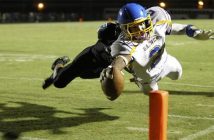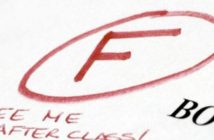
A new report takes an in-depth look at what children are reading across all grade levels, finding that the average student has not met any college and career readiness reading standards.
The report, “What Kids Are Reading: And the Path to College and Careers,” is based on data collected by 9.8 million students between grades 1 and 12 across 31,327 schools. The students read over 334 million books and nonfiction articles in the 2014-15 school year.
Measurements used for the report are split between three categories, including the amount of time spent reading, nonfiction reading, and interaction with complex reading. According to the authors, it is these three characteristics that show how much reading will be responsible for any increases found to annual achievement growth.
This year, the eighth year the report has come out, authors discovered that students who start off the school year behind their peers, yet read more than their peers, ended the school year meeting higher standards than those students who did not read as much.
Nonfiction reading has increased dramatically across the nation as Common Core and new academic standards have been adopted. Despite this, students are still falling short of the type of reading necessary to prepare them for college and careers.
The report states that the amount of time children spend reading is an important indicator of how much vocabulary they will acquire. The authors maintain that in order for students to learn words, they needed repeated exposure to words, which is mostly done through reading. The authors discovered that although the majority of students read for 15 minutes each day, those who read for at least 30 minutes became exposed to millions more words over the course of their school years.
Students become exposed to the most vocabulary in the sixth grade when they average about 440,000 words. In grade 1, children read an average of 26,000 words. After the 6th grade, vocabulary exposure slows down to about 300,000 words by the end of high school.
Researchers were also able to determine the percentage of students who would reach benchmarks for college and career readiness using proficiency standards set by the Smarter Balanced Assessment Consortia and the Partnership for Assessment of Readiness for College and Career (PARCC). In a study of over 2.8 million students across 12,000 school districts, around 39% of students who did not use the Accelerated Reader 360 for their daily reading practice met benchmarks. Meanwhile, 66% of students who read for at least 15 minutes per day at a high level of comprehension were more likely to reach the benchmarks. Results remained constant for all student populations of interest, including struggling readers, English learners, and students in free or reduced lunch programs.
According to the study, setting independent reading goals will help students to read better and learn more.
“Students who meet goals set for independent reading practice read more and achieve better outcomes than students without set goals. They are likely to read more books, experience higher success/comprehension rates, and ultimately make greater gains in reading achievement. In fact, the data show that students who strive to reach individual goals, on average, tend to perform better than students without set goals.”




